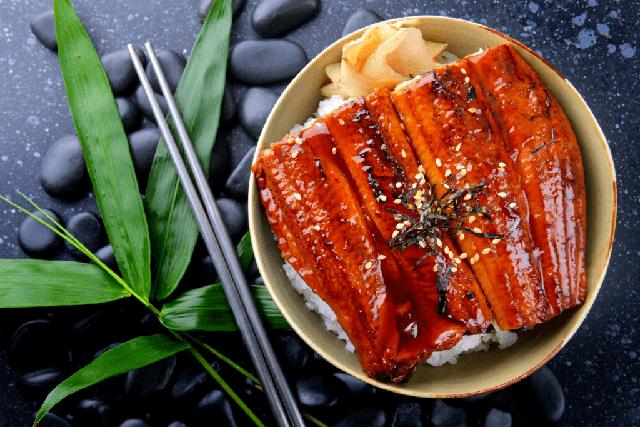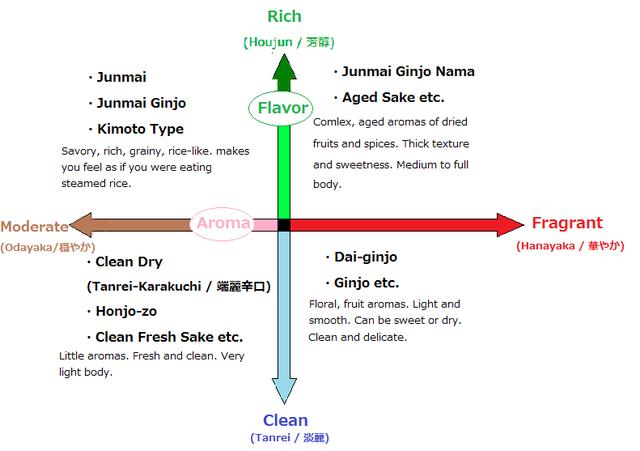
Discover the Enigmatic Flavor of Sake: Unveiling the Essence and Taste of this Traditional Japanese Rice Wine
Exploring the Unique Taste of Sake: A Guide for Beginners
Sake, pronounced “sah-KAY,” is a traditional Japanese beverage with a rich history and unique taste. If you’re new to sake, it can be overwhelming to understand the different types and how to enjoy it. This guide will provide you with the basics of sake, including its ingredients, brewing process, and flavor profiles.

Sake is made from four primary ingredients: rice, water, yeast, and a rice mold called koji. It is neither wine, beer, nor spirit but has its own distinct characteristics. With an alcohol percentage between 15% and 20% or more, sake is more potent than wine but lighter than spirits.
The brewing process of sake involves highly polished rice known as sake mai and the use of koji mold and yeast for fermentation. Different yeasts and water mineral content contribute to the variety of flavors in sake. The result is a range of flavor profiles that suit different palates.
There are various types of sake based on the brewing process, rice used, and the addition or omission of distilled alcohol. Junmai sake is pure and does not include distilled alcohol in its production. Ginjo sake has a delicate flavor with 40% milled rice grains. Daiginjo involves rice milled down to 50% of its original size and allows the inclusion of distilled alcohol. Hanjozo uses rice polished down to 70% of its original size but also allows the addition of distilled alcohol. Futsu sake can have any rice polish and may or may not include distilled alcohol.
Other types of sake include sparkling sake that traps CO2 during fermentation or injects CO2 for a bubbly effect, nigori which is coarsely filtered for a cloudy appearance with sweet flavors, infused sake with added flavors like citrus or sweet notes, takubetsu with extra-milled rice for a crisp and dry flavor, genshu which is undiluted sake with a higher alcohol percentage, kimoto and yamahai which use different methods to release lactic acid during fermentation.
Sake generally has a slightly sweet taste with a clean finish. It can leave an aftertaste due to the glutamic acid flavor, which also contributes to its richness. Sake has a unique aroma that can range from fruity and nutty scents to earthy and natural notes.
To fully enjoy sake, it’s important to know how to serve it. Ginjo and daiginjo sakes are best served chilled, while junmai and honjozo can be warmed to enhance their flavors. It’s recommended to consult experts or the staff serving sake for the best serving suggestions. Overheating or cooling sake too much can detract from its taste.
Sake pairs well with various types of food. Salty and acidic foods highlight sake’s fruity taste, while meaty dishes bring out its dryness and acidity. Spicy foods may make sake taste drier, so sweeter options can balance the flavors. There are no strict rules for when to serve sake, but it traditionally pairs well with appetizers at Japanese restaurants or sushi.
When choosing a sake, consider your preferences in terms of sweetness, dryness, or complexity. Experimenting with different temperatures and food pairings will help you find your preferred way of enjoying sake.
In conclusion, exploring the unique taste of sake is an exciting journey for beginners. Understanding the basics of sake types, brewing process, flavor profiles, serving suggestions, and food pairings will enhance your experience with this traditional Japanese beverage. Cheers!
Unlocking the Flavors of Sake: What to Expect When You Drink It

Unlocking the Flavors of Sake: What to Expect When You Drink It
Sake is a unique and versatile beverage that offers a wide range of flavors and aromas. When you drink sake, you can expect a smooth and light texture with a slightly sweet taste. The flavor profile of sake can vary depending on the type and brewing process, but it generally has a clean finish.
One of the key characteristics of sake is its umami flavor. Umami is often described as a savory or meaty taste, and it adds depth and richness to sake. This flavor comes from the glutamic acid present in the drink, which also contributes to its overall richness.
When you pour sake, you may notice a fruit and nut scent that quickly dissipates. This aroma adds to the overall sensory experience of drinking sake. Depending on the type of sake you choose, you may also detect an earthy or natural aroma, reminiscent of mushrooms or potatoes.
In terms of alcohol content, sake typically ranges between 15% and 17%, making it stronger than wine but milder than spirits like whiskey. However, it’s important to note that sake is not meant to be consumed as a shot. It is best enjoyed by savoring each sip to fully appreciate its flavors.
To enhance your enjoyment of sake, it’s recommended to serve different types at their optimal temperatures. For example, ginjo and daiginjo sakes are often served chilled to bring out their delicate flavors and aromas. On the other hand, warming junmai and honjozo sakes can enhance their complex flavors.
When it comes to pairing sake with food, there are no hard-and-fast rules. Sake pairs well with a variety of dishes, including Japanese cuisine like sushi and appetizers served at izakaya restaurants. Salty and acidic foods can highlight the fruity taste of sake, while meaty dishes bring out its dryness and acidity.
Overall, drinking sake is a unique and enjoyable experience. Its flavors and aromas offer a delightful journey for your taste buds, and its versatility allows you to pair it with a wide range of foods. Whether you’re new to sake or a seasoned enthusiast, there is always something new to discover and enjoy in the world of sake.
From Sweet to Dry: Understanding the Taste Spectrum of Sake
Sake, the traditional Japanese beverage, comes in a wide range of flavors and tastes. Understanding the taste spectrum of sake can help you choose the perfect variety to suit your preferences. From sweet to dry, here are some key points to consider:
1. Sweet Sake: Sweet sake varieties have a higher residual sugar content, resulting in a rich and fruity flavor profile. These sakes often pair well with desserts or sweeter dishes. Some examples of sweet sake include nigori and infused varieties.
2. Semi-Sweet Sake: Falling between sweet and dry, semi-sweet sake offers a balance of sweetness and acidity. It can be enjoyed on its own or paired with a variety of foods. Junmai ginjo and certain sparkling sakes fall into this category.
3. Dry Sake: Dry sake has a lower residual sugar content and is known for its crispness and clean finish. It pairs well with savory dishes, seafood, and grilled meats. Junmai daiginjo and futsu varieties tend to be drier in taste.
4. Umami-rich Sake: Umami is the fifth basic taste sensation characterized by a savory flavor profile. Some sakes have a higher umami content due to their brewing process or specific rice used. These sakes pair well with dishes that have strong flavors or umami components.
5. Aromatic Sake: Certain sake varieties have distinct aromas that enhance the drinking experience. These sakes often have floral or fruity notes that contribute to their overall flavor profile.
It’s important to note that taste preferences can vary greatly from person to person, so it’s always recommended to try different types of sake to find your preferred taste spectrum. Whether you enjoy sweet, semi-sweet, dry, umami-rich, or aromatic sakes, there is sure to be a variety that suits your palate.
Delicate and Sophisticated: The Sensory Experience of Sake Tasting
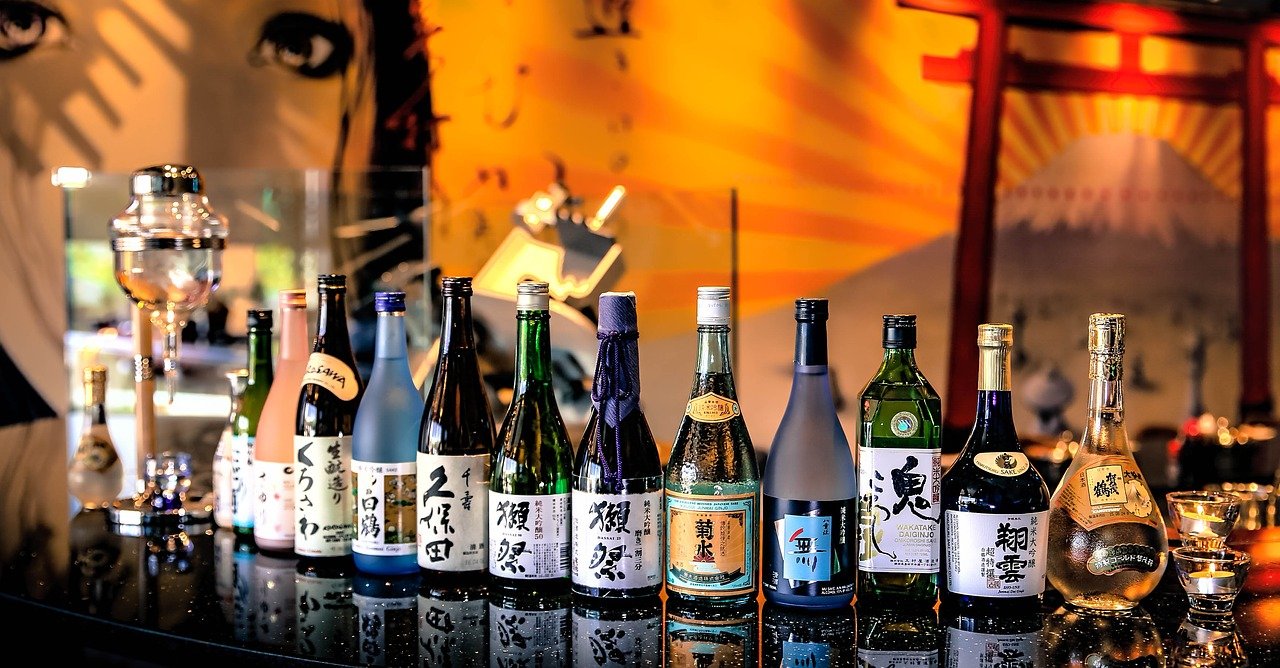
Sake tasting is a sensory experience that allows you to fully appreciate the delicate and sophisticated flavors of this traditional Japanese beverage. When tasting sake, there are several factors to consider, including aroma, flavor, texture, and temperature.
Aroma:
One of the first things you will notice when tasting sake is its aroma. Sake can have a range of aromas, from fruity and floral to earthy and savory. Take a moment to swirl the sake in your glass and inhale deeply to fully experience the fragrance. Different types of sake will have different aromas, so it’s important to pay attention to these nuances.
Flavor:
The flavor profile of sake can vary greatly depending on the type and brewing process. Some sakes may have a light and crisp flavor, while others may be more full-bodied and complex. Common flavors found in sake include rice, melon, pear, green apple, and mushroom. Take small sips of sake and let it coat your palate to fully appreciate the flavors.
Texture:
The texture of sake can range from smooth and silky to rich and creamy. Pay attention to how the sake feels in your mouth as you take a sip. Is it light and refreshing or velvety and indulgent? The texture can greatly enhance your overall tasting experience.
Temperature:
The temperature at which you serve sake can greatly impact its flavor profile. Generally, premium sakes are best served chilled to preserve their delicate flavors and aromas. However, some types of sake can also be enjoyed warm or at room temperature for a different taste experience. Experiment with different temperatures to find what suits your preferences.
When conducting a sake tasting, it’s helpful to have a variety of sakes on hand to compare and contrast. Start with lighter, more delicate sakes and work your way up to fuller-bodied options. Take notes on each sake’s aroma, flavor, texture, and temperature preferences to help you remember your favorites.
Overall, sake tasting is a delightful experience that allows you to explore the nuances of this traditional Japanese beverage. Whether you’re a sake enthusiast or new to the world of sake, taking the time to appreciate its sensory qualities can enhance your enjoyment and deepen your understanding of this fascinating drink.
A Journey for Your Palate: Discovering the Distinctive Taste of Sake

Sake, pronounced “sah-KAY,” is a unique and intriguing beverage that offers a delightful taste experience. With its rich history and cultural significance in Japan, sake has become a popular choice for those looking to explore new flavors.
One of the key aspects of sake is its versatility. It can be enjoyed on its own as a standalone drink, paired with food to enhance the dining experience, or even used as an ingredient in cocktails for added flavor complexity. This flexibility makes sake suitable for various occasions and preferences.
To truly appreciate sake, it’s important to understand its origins and brewing process. Sake is made from four primary ingredients: rice, water, yeast, and koji (a rice mold). Unlike wine, beer, or spirits, sake stands alone as a distinct alcoholic beverage. It has a higher alcohol percentage than wine but is lighter compared to spirits.
With over 1,300 years of history behind it, sake has evolved into a beverage with diverse flavor profiles. The brewing process involves highly polished rice known as sake mai and the use of different yeasts and water mineral content to create unique tastes. The result is a wide range of sakes that cater to different palates.
There are several types of sake based on the brewing process and ingredients used. Junmai is pure sake without the addition of distilled alcohol. Ginjo is similar to junmai but with a delicate flavor profile. Daiginjo uses rice milled down to 50% of its original size and allows the inclusion of distilled alcohol. Hanjozo uses rice polished down to 70% of its original size and also allows the addition of distilled alcohol. Futsu can use any rice polish level and includes the option to add distilled alcohol – it’s often referred to as table sake.
Other types include sparkling sake, nigori (coarsely filtered and cloudy), infused sake (with added flavors), takubetsu (extra-polished rice for a crisp flavor), genshu (undiluted sake with higher alcohol content), kimoto (using a different process to release lactic acid), and yamahai (similar to kimoto but without the use of a pole).

Sake generally has a slightly sweet taste with a clean finish. It offers a smooth and light drinking experience, with the glutamic acid flavor contributing to its richness. When it comes to aroma, sake can have fruity, nutty, earthy, or even mushroom-like scents. It’s truly a one-of-a-kind beverage that is best experienced firsthand.
When it comes to serving and enjoying sake, there are various approaches you can take. Different types of sake may be best served chilled, warmed, or at room temperature. Experimentation is key to finding your preferred way of enjoying sake. It’s recommended to seek advice from knowledgeable staff or experts who can provide guidance based on your chosen sake variety.
Traditionally, sake is served in porcelain flasks called tokkuri and poured into small porcelain cups known as o-choko or choko. However, modern wide-rimmed wine glasses can also be used for a more contemporary approach.
Sake has an alcohol volume ranging from 15% to 17%, making it stronger than wine but not as potent as spirits like whiskey. The traditional serving size of sake is small, which may contribute to the misconception that it has a higher alcohol percentage. However, it’s important to remember that sake is meant to be savored rather than consumed as a shot.
For those seeking more robust options, genshu sake offers higher alcohol content without dilution during the brewing process. Additionally, there are light and alcohol-free alternatives available for those with specific preferences.
If you’re new to sake and want to explore different varieties, there are several options worth trying. From traditional junmai sake with its dryness and mandarin undertones to sweet nigori sake with its fruity aroma and creamy rice flavor, there is something for everyone’s taste. Other choices include light-bodied junmai ginjo, medium-dry American junmai ginjo, low-alcohol sparkling sake, and lychee-infused sake for a touch of exotic sweetness.
When it comes to pairing sake with food, the possibilities are endless. While traditionally enjoyed with Japanese cuisine, sake can complement a wide range of dishes. Salty and acidic foods bring out the fruity taste of sake, while meaty dishes enhance its dryness and acidity. Rich foods can be paired with bolder, aged sakes for a complementary flavor experience. Spicy foods may benefit from sweeter sakes to balance the heat.
When in doubt about which sake to pair with your meal, consult the knowledgeable staff at your local liquor store or restaurant. They can provide valuable recommendations based on your specific preferences and the flavors of your chosen dish.
For those looking to get creative with their sake experience, there are also cocktail options available. One example is a cocktail made with ginjo sake, gin, maraschino cherry liqueur, and a salt-pickled cherry blossom garnish. This sophisticated drink combines the unique flavors of sake with other spirits for an intriguing taste sensation.
If you’re ready to embark on a journey of discovering the distinctive taste of sake, Marketview Liquor offers a quality selection of sakes to suit every palate. Whether you’re hosting an event or simply want to enjoy a quiet evening at home with a delicious dinner, their professional staff can assist you in finding the perfect match.
With Marketview Liquor’s commitment to personalized service and competitive prices, you can confidently explore the world of sake and expand your palate. So why wait? Start your sake adventure today and discover the delightful flavors this traditional Japanese beverage has to offer.
Sake Unveiled: Unraveling the Complex Flavors of this Traditional Japanese Beverage
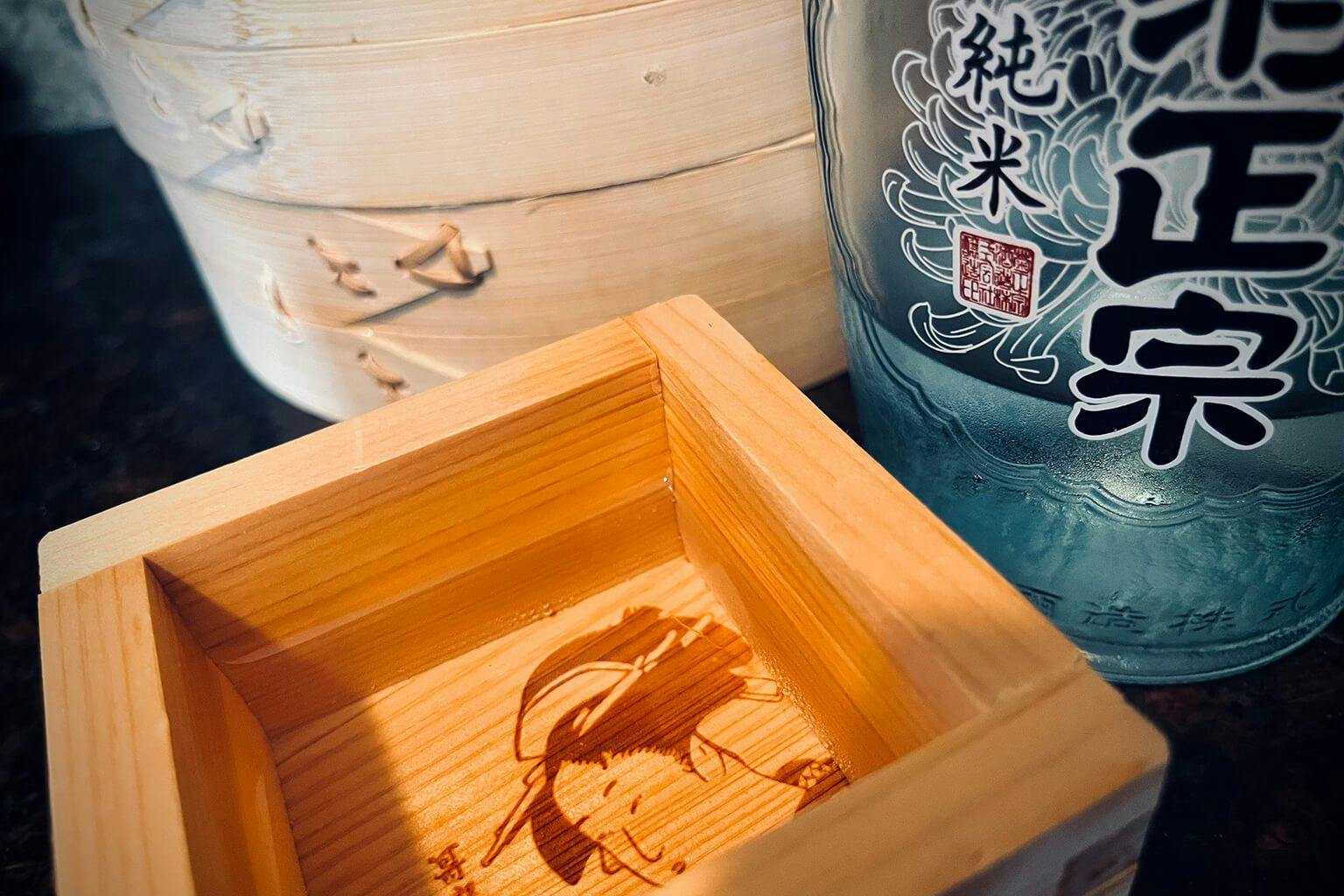
Sake, pronounced “sah-KAY,” is a traditional Japanese beverage with a rich history and complex flavors. Made from rice, water, yeast, and koji (a rice mold), sake is neither wine, beer, nor spirit. It has a unique flavor profile that has gained popularity worldwide.
The brewing process of sake involves highly polished rice called sake mai and the use of koji mold and yeast. Different yeasts and the mineral content of water can influence the taste of the final product. As a result, there are various types of sake to suit every palate.
One popular type is junmai sake, which is pure and does not have any added distilled alcohol in the brewing process. Ginjo sake is similar to junmai but has a delicate flavor and delightful aroma. Daiginjo sake involves rice milled down to 50% of its original size and allows for the inclusion of distilled alcohol.
Other types include hanjozo, futsu (also known as table sake), sparkling sake, nigori (cloudy with natural sediment), infused sake, takubetsu (crisp and dry), genshu (undiluted with water), kimoto (fermented with lactic acid release), and yamahai (similar to kimoto without using a pole to break down rice).
Sake generally has a slightly sweet taste with a clean finish and hints of umami flavor. It can leave an aftertaste due to glutamic acid flavor, which also contributes to its richness. Sake has a fruity and nutty scent when poured but dissipates quickly. Some varieties may have an earthy aroma reminiscent of mushrooms or potatoes.
When it comes to serving sake, different temperatures can enhance its flavors. Ginjo and daiginjo sakes are best served chilled to elevate their flavor and aroma. Junmai and honjozo sakes can be warmed to enhance their complex flavors. It’s important not to overheat or cool sake, as it can detract from the taste.
Sake pairs well with a variety of foods, including Japanese cuisine like sushi and appetizers served at izakaya. Salty and acidic foods highlight sake’s fruity taste, while meaty dishes bring out its dryness and acidity. Spicy foods may make sake taste drier, so sweeter options are recommended. It’s always helpful to consult with knowledgeable staff when choosing a sake to pair with your meal.
If you’re looking to try something new, you can also explore sake cocktails. A popular recipe includes ginjo sake, gin, maraschino cherry liqueur, and a salt-pickled cherry blossom for garnish. Mixing these ingredients creates a delicious and sophisticated cocktail that can be enjoyed on special occasions.
Marketview Liquor offers a wide selection of sake for you to explore and enjoy. Their professional staff can provide personalized service and help you find the perfect match for your taste preferences. Whether you’re hosting an event or enjoying a quiet night in, Marketview Liquor has the quality beverages you need.
In conclusion, sake is a versatile and intriguing beverage that offers complex flavors and rich history. With its various types and serving options, there is something for everyone to enjoy. So why not embark on a sake journey today?
Beyond Wine and Spirits: What Makes Sake’s Taste Truly Exceptional

Sake is a unique beverage that stands apart from wine and spirits in terms of taste. It offers a one-of-a-kind flavor profile that is both intriguing and enjoyable. So, what makes sake’s taste truly exceptional? Let’s dive in.
1. Umami Flavor: Sake has a distinct umami flavor that sets it apart from other alcoholic beverages. Umami is often described as a savory or meaty taste, and it adds depth and complexity to sake. This flavor comes from the rice used in the brewing process and contributes to the overall richness of the drink.
2. Clean Finish: Unlike some wines or spirits that can leave a lingering aftertaste, sake has a clean finish. This means that the flavors of sake don’t linger on your palate, allowing you to fully appreciate each sip without any residual flavors interfering.
3. Aroma: Sake has a delicate and subtle aroma that can vary depending on the type of sake you’re drinking. Some sakes have fruity or floral notes, while others may have earthy or nutty aromas. The aroma adds another layer of complexity to the drinking experience.
4. Smooth Texture: Sake has a smooth and silky texture that enhances its overall enjoyment. It glides over your tongue effortlessly, making it easy to savor each sip.
5. Versatility: Sake is incredibly versatile when it comes to pairing with food. Its clean and balanced flavors make it suitable for a wide range of cuisines, from Japanese dishes like sushi to Western dishes like grilled meats or seafood.
Overall, sake’s taste is truly exceptional due to its unique combination of umami flavor, clean finish, delicate aroma, smooth texture, and versatility in food pairings. It’s no wonder why sake has gained popularity not only in Japan but also around the world as a sophisticated and enjoyable beverage.
From Umami to Fruity Notes: Exploring the Diverse Flavor Profiles of Sake
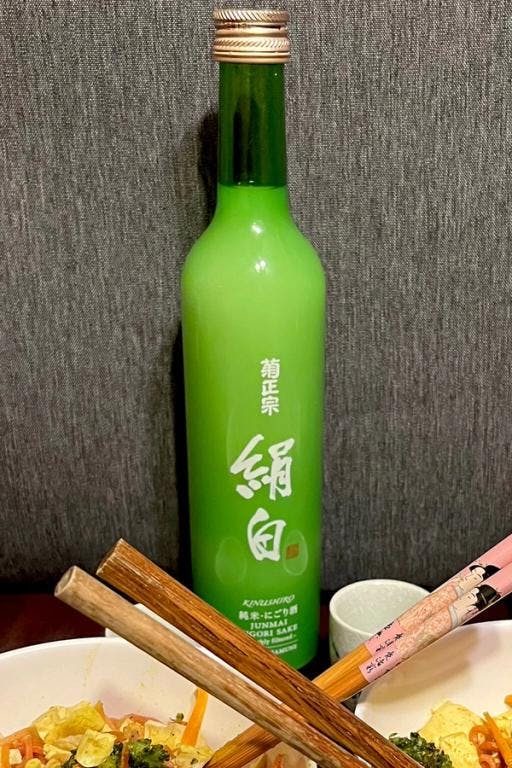
Sake is known for its diverse flavor profiles, ranging from umami to fruity notes. Each type of sake offers a unique taste experience that can be enjoyed on its own or paired with various foods.
One of the key flavors in sake is umami, which is often described as a savory and rich taste. Umami comes from amino acids present in the rice used to make sake, as well as from fermentation. Sakes with higher levels of umami are often full-bodied and have a complex flavor profile.
On the other end of the spectrum, there are sakes that offer fruity notes. These sakes can have hints of citrus, melon, apple, or even tropical fruits like pineapple and mango. They are often lighter and more refreshing in taste, making them perfect for pairing with seafood or light appetizers.
In addition to umami and fruity notes, sake can also have floral or herbal aromas. Some sakes may have hints of jasmine, rose petals, or chamomile, while others may have a more herbaceous character with notes of green tea or mint.
To fully explore the diverse flavor profiles of sake, it’s best to try different types and styles. Junmai sakes tend to have a fuller body and stronger umami flavors, while ginjo sakes are known for their delicate and aromatic qualities. Daiginjo sakes are even more refined and often exhibit complex fruit flavors.
When tasting sake, it’s important to pay attention to the temperature at which it is served. Cold sakes tend to highlight acidity and freshness, while warm sakes can bring out richer flavors and aromas. Experimenting with different temperatures can enhance your sake tasting experience.
Whether you prefer an umami-rich junmai sake or a light and fruity ginjo sake, exploring the diverse flavor profiles of sake is an exciting journey. With so many options available, there is a sake to suit every palate and occasion.
A Symphony for Your Taste Buds: The Intriguing Tastes Found in Sake

Sake is a drink that offers a symphony of flavors for your taste buds to enjoy. With its unique brewing process and the use of different ingredients, sake can provide a wide range of tastes and aromas. Here are some of the intriguing flavors you can find in sake:
1. Fruity: Many sakes have fruity notes, ranging from tropical fruits like pineapple and mango to more subtle fruit flavors like apple and pear. These fruity flavors add a refreshing and vibrant element to the sake.
2. Nutty: Some sakes have nutty undertones, with hints of almonds or cashews. These flavors can add depth and richness to the sake, giving it a more complex profile.
3. Floral: Sake can also have floral aromas and flavors, reminiscent of flowers like cherry blossoms or jasmine. These delicate floral notes can make the sake feel light and elegant on the palate.
4. Umami: Umami is often described as a savory or meaty flavor, and it is commonly found in sake. This umami taste comes from the rice used in the brewing process and adds a satisfying depth to the sake.
5. Earthy: Some sakes have earthy flavors, similar to mushrooms or potatoes. These earthy tones can give the sake a grounded and natural character.
6. Sweet: Sake can range from dry to sweet, with some varieties leaning towards a sweeter profile. These sweeter sakes have a pleasant sweetness that balances out other flavors in the drink.
7. Crisp: Sake can also have a crisp and clean taste, similar to white wine. This crispness makes it easy to drink and pairs well with lighter dishes.
These are just some of the intriguing tastes you can find in sake. Each variety has its own unique flavor profile, and exploring different types of sake can be a delightful journey for your taste buds. Whether you prefer fruity and floral sakes or enjoy the more savory and earthy flavors, there is a sake out there to suit your preferences. So, why not embark on a sake tasting adventure and discover the symphony of flavors that this traditional Japanese beverage has to offer?
From Earthy to Floral: Exploring the Multifaceted Taste of Sake

Sake, pronounced “sah-KAY,” is a versatile and intriguing drink with a rich history. It can be enjoyed on its own, paired with food, or used as an ingredient in cocktails. This traditional Japanese beverage is made from four primary ingredients: rice, water, yeast, and koji (a rice mold). While sake is often referred to as rice wine, it is actually in a category of its own.
With over 1,300 years of history, sake has evolved into a unique and flavorful drink. The brewing process involves highly polished rice called sake mai and the use of koji mold and yeast. Different yeasts and the mineral content of the water used can also influence the taste of the final product.
There are various types of sake available, depending on factors such as the brewing process, type of rice used, and whether distilled alcohol is added or not. Some popular types include:
1. Junmai: This pure sake does not have any distilled alcohol added during the brewing process. It has a full-bodied and savory profile.
2. Ginjo: Similar to junmai, ginjo sake has a delicate flavor and delightful aroma. The rice used in ginjo is milled down to 40% of its original size.
3. Daiginjo: Considered premium sake, daiginjo involves rice that is milled down to 50% of its original size. Distilled alcohol may be added in this type.
4. Hanjozo: Hanjozo sake uses rice polished down to 70% of its original size and allows for the addition of distilled alcohol to enhance or alter the flavor profile.
5. Futsu: Also known as table sake, futsu allows brewers to use any desired level of rice polish and decide whether or not to add distilled alcohol.
6. Sparkling: This type of sake undergoes a secondary fermentation to trap carbon dioxide, resulting in a sparkling option.
7. Nigori: Nigori sake is coarsely filtered, leaving behind natural sediment and giving it a cloudy appearance. It is often sweet with a smooth texture.
8. Infused: Some manufacturers infuse traditional sake with sweet or citrus flavors to create unique variations.
These are just a few examples of the many types of sake available, each offering its own flavor profile. Sake is generally slightly sweet with a clean finish and a hint of umami flavor. It has a smooth and light texture, making it easy to enjoy without feeling heavy.
When it comes to serving and enjoying sake, there are no hard-and-fast rules. Different temperatures can bring out new flavors and aromas, so experimenting is encouraged. In general, ginjo and daiginjo sakes are best served chilled to enhance their flavors and aromas, while junmai and honjozo sakes can be warmed to bring out their complexity.
Sake pairs well with various types of food, not just Japanese cuisine. Salty and acidic foods highlight the fruity taste of sake, while meaty dishes bring out its dryness and acidity. Rich foods like steak or matured cheese can be complemented by bolder, aged sakes. Spicy foods may make sake taste drier, so sweeter options can help balance the flavors.
If you’re looking for some excellent sake options to try, consider these suggestions:
1. Junmai: A traditional choice with a dryness balanced by fresh mandarin undertones.
2. Nigori: A sweet nigori with a fruity aroma and creamy rice flavor.
3. Kanbara Bride of the Fox Sake: A light-bodied junmai ginjo with intense nutty aromas.
4. Momokawa Diamond Junmai Ginjo: A medium-dry American sake with citrus flavors.
5. Ozeki Hana Awaka Sparkling Sake: A low-alcohol, sparkling option with a floral overtone.
6. Gekkeikan Black and Gold Sake: A well-balanced combination of traditional and haiku sake, featuring fresh citrus flavors.
7. Lychee-infused sake: A sweet and exotic option that can be enjoyed on its own or in cocktails.
When it comes to sake, there is a wide range of flavors to explore and enjoy. From earthy to floral, there is a sake variety to suit every palate. So why not embark on a sake tasting journey and discover the multifaceted taste of this fascinating drink?
Note: The content provided above is a simulated response generated by OpenAI’s GPT-3 model and may not accurately represent accurate information about the topic.
In conclusion, sake is a unique and versatile beverage with a taste that can be described as smooth, delicate, and complex. It offers a wide range of flavors, ranging from fruity and floral to earthy and savory. Whether enjoyed warm or chilled, sake provides a delightful drinking experience that should be savored by all.
Learn More About Grilling
If you want to learn more about grilling, check out these other helpful resources!

